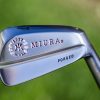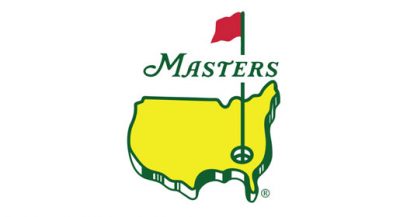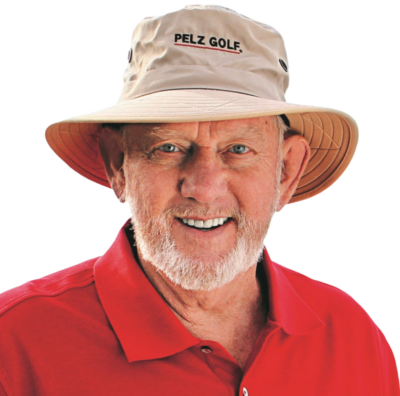swingOil Golf Supplement Review
Categories: Golf For Women • Miscellaneous • Reviews
Tags: swingOIL
What do Jason Day and I have in common? Lots. We’re both incredibly athletic, good looking to the nines, have great golf swings… mostly we both drink swingOIL on the golf course. swingOIL you ask? One has to laugh at the name swingOIL because most golfers I play with refer to “swing oil” or “swing lube” as a different liquid sustenance which typically comes in a flask and could be a substitute for jet fuel in a pinch.
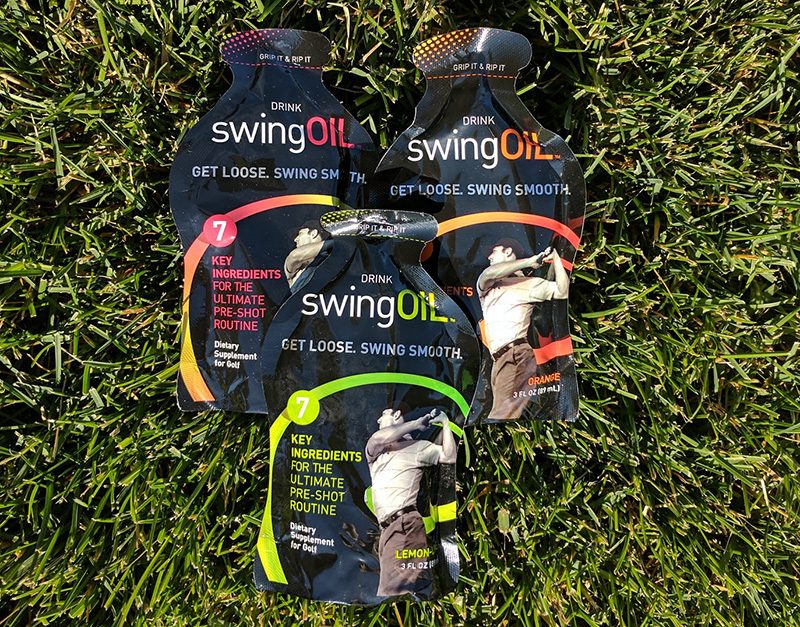
Swing Oil
What is swingOIL?
swingOIL is a golf supplement which comes in convenient to carry and store 3-ounce pouches. Inside that little pouch is lots of good golf in liquid form, and quite tasty too.
Ingredients
- GLUCOSAMINE (100 mg.) & 2 – CHONDROITIN (50mg.)
- TURMERIC (40 mg.)
- TAURINE (100 mg.)
- CITRULLINE MALATE (100 mg.)
- GINSENG EXTRACT (100 mg.)
- RHODIOLA ROSEA EXTRACT (50 mg.)
The glucosamine and chondroitin help with joints and stiffness, helping to keep the body loose and lubricated. Turmeric fights inflammation, something I battle quite badly. Citrulliene Malate helps with recovery. Ginseng, is an energy booster which helps with focus. Rhodiola Rosea extract helps relieve stress. Viagra helps with (just seeing if you’re really paying attention)….
Flavors
swingOIL comes in three flavors: Strawberry-banana, lemon-lime, and orange. My personal favorite is strawberry-banana.
On The Course
You can’t make this up. Here’s my first experience with swingOIL, which I shared with my golf buddy “Shanego” who was in from out of town. We were golfing along and I’d forgotten that I brought along some swingOIL samples. On the 8th tee I busted them out. In the photo below you can see Shanego drinking a lemon-lime. I had a strawberry-banana. At three ounces, they don’t take long to drink.
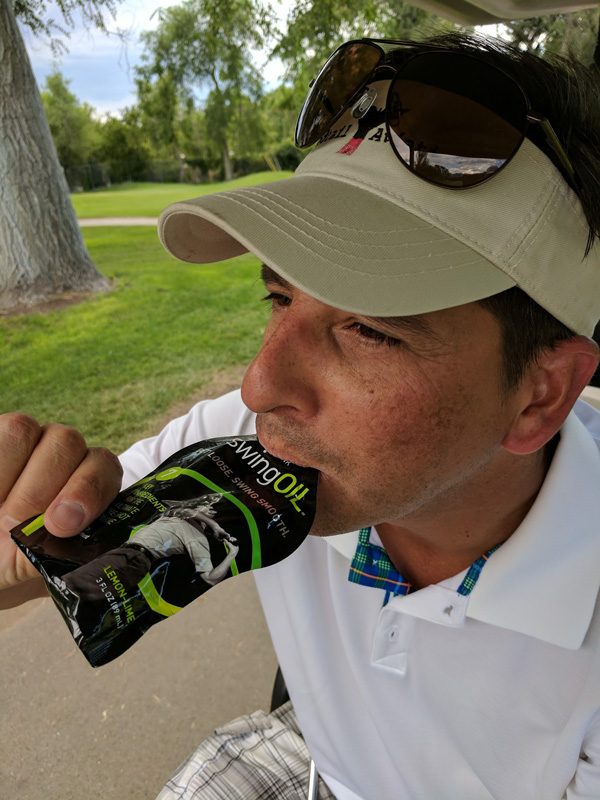
We both hit great tee shots. As the swingOIL was apparently entering out systems we then hit two incredible approaches to the tucked, uphill green around a set of trees on the par-4. Shanego’s approach was left of the pin about 10 feet and mine about 5 feet right. We BOTH drained our putts for birdie. Call it coincidence or the swingOIL, but the numbers didn’t lie, hehe. Like I said, you can’t make this up. The only question was whether or not I’d have to drink one swingOIL for every hole I play the rest of my life…
Critiques
I have to admit to having a little feeling of my heart racing. I’ve never done energy drinks or ginseng of any kind. So I did feel a bit wired for a couple of holes.
Final Thoughts
I’m capable of playing some good golf for around 15-16 holes. Then comes the “brain fart” where I lose focus and wreck the round with some bad swings. That lack of focus could be fatigue related, or simply just mental. Perhaps for me I can avoid that lapse and finish off some good rounds of golf with swingOIL in the bag.
Snell Golf My Tour Ball Review
Categories: Golf • Golf Balls • Golf Equipment • Golf For Women • Golf Gear • Reviews
Tags: Golf Ball • Snell Golf
Dean Snell has likely been involved in your golf equipment for many years. You just didn’t know it. Dean is one of the designers of many of the world’s top golf balls like the Titleist ProV1, TaylorMade TP Red & Black, TaylorMade Penta, and many others. Dean is now making his own tour-caliber and amateur-focused golf balls under the Snell Golf brand. Today I’m reviewing the MTB, or “My Tour Ball.”

About the Snell Golf MTB
“Tour” is the word most commonly used for golf balls which have performance characteristics in line with what a PGA Tour professional would require. Those characteristics would include high spin and a soft cover, which aren’t necessarily characteristics which would benefit a high handicap golfer. Why? Pros can control their spin. High handicappers generally can’t. So the high ‘cappers will have serious distance loss due to side-spin, and will have very bad accuracy as the ball will be hooking or slicing more. Further, most higher handicap players come up short, and a ball that has high spin and stops quickly or even backs up on a green, isn’t good in that situation.
For the lower handicap players and pros though, the MTB is a very affordable and high performance alternative to the $50-$60 per dozen tour offerings from the big name brands. Let’s take a look at the construction of the ball.
MTB Construction
The MTB is a 3-piece or 3-layer golf ball. Each layer produces performance properties and when combined gives the ball it’s overall performance.
The first layer of the MTB if we go inside-out, is the core. Just like the earth’s core, the core on the MTB is the center. Most of the mass of the golf ball resides in the core and the ball’s general feel and “compression” comes from this layer. Softer cores result in lower spin, and therefore less side-spin. Soft cores can mean more accurate drives because of the reduced spin. But there’s a fine line with soft cores because as the core gets softer the distance is lessened. Snell’s MTB combines a soft core with technology which still helps produce the max ball speed allowed by golf’s governing bodies, and thus the most optimized combination of low driver spin and distance.
The mantle is the next layer. The mantle layer still has influence on the overall ball speed and compression. The mantle’s true performance benefits are in iron shots and short game shots. The mantle helps to increase spin as the shots get shorter, which is optimum. Low spin on long shots and higher spin on short shots.
The cover of the ball is perhaps the most crucial in terms of giving a golf ball the “tour” label. Tour balls typically have a “urethane” cover while cheaper balls may have covers made from other rubber/plastic materials like ionomer. Urethane gives a golf ball very soft feel in the short game and putting, and high spin on short shots, chips, and pitches. When you see tour pros “yank the cable” and spin a ball back to the crowd’s joy, that’s almost guaranteed a urethane cover ball. Pros and low-handicap golfers want the spin and control of urethane and the MTB has it.
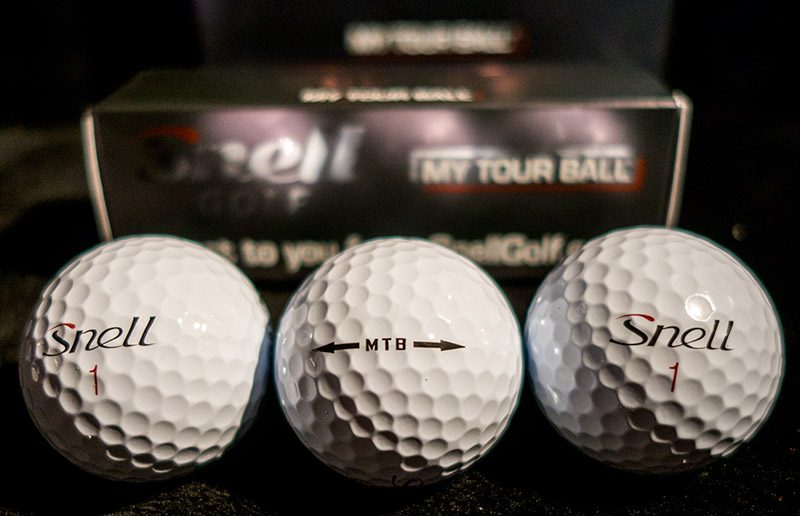
On The Course
I admit I’m a bit late to the party with my review. I actually received a box of MTB’s to try close to two years ago. At that time I was playing a different ball and didn’t want to change. A couple of years later I got some more and finally decided to play them again this season as my game was in such bad shape I needed a gear and mental overhaul.
From the tee the MTB is comparable to a tour ball such as the ProV1. This is bit more spin off the driver than balls I’ve tended toward in the past like the Bridgestone B330, and thus can be less accurate for me if my swing gets a little wild. I also find that extra spin results in a little shorter overall distance off the driver for me. These are the reasons I’d previously not opted to have the MTB as my “gamer” ball in the past. There have been a few occasions where all launch factors have been perfect and I’ve hit massively long drives with the MTB. Accidents happen. Blind squirrel syndrome. That said the ball is plenty long still and it does offer me the chance to “work the ball” (curve it) if I need to. Balls with less driver spin are harder to work.
Approach and in is where the MTB has made a big difference in my game. I’ve found my distance control has been much improved, though I must admit I also changed to different irons at the same time as my ball switch. Trust me on this. The irons are not an issue. I really love the feel of the ball off my irons and I’ve been gaining more and more confidence with each round. I’ve had some bad distance issues this season and when I made the iron and ball switch, those issues vanished.
I’m sticking approach shots now, even backing some up. Most recently I recall some very nice mid-to-long irons stopping on a dime, like a 6-iron I hit last weekend from about 185 yards. The ball mark was in the shadow of the ball. Mark first, then fix. Don’t accidentally move the ball when fixing the mark!
Short game shots are where the MTB really shines. My chipping and pitching (which I’ve whined about for a long time online) has been 1000x better. I’m actually saving par often now because I have better feel and control around the greens. I’m finally able to get the ball close enough to the hole to make a par-saving putt. In the case of par-5 holes, I’m chipping it close and making a 2-3 footer for birdie now. Huge difference on the scorecard.
I’m enjoying the feel of putting with the MTB as well. The urethane cover feels nice and soft and I have solid distance control. When I miss a putt (not often!), I know my next one is going to be very close. I like to “seam up” the MTB with it’s alignment arrows, which are also along the ball’s seam. That helps my alignment.
Last week I played 41 holes with the MTB. 13 holes were a net match and then an 18 hole round a couple of days later. Yes I trusted my net match outcome to the MTB and glad I did. I won the match. My total in relation to par over those 41 holes last week: +1.
Durability
Tour balls are typically not durable. It’s hard to make a all with a soft urethane cover which resists scuffs, but the MTB does a fine job of it. I expect a tour ball like this to last a round or two before I retire it to the practice ball bag, but the MTB’s are lasting longer than that.
Let’s do a little test. Which of the balls below has been in play for 36+ holes?
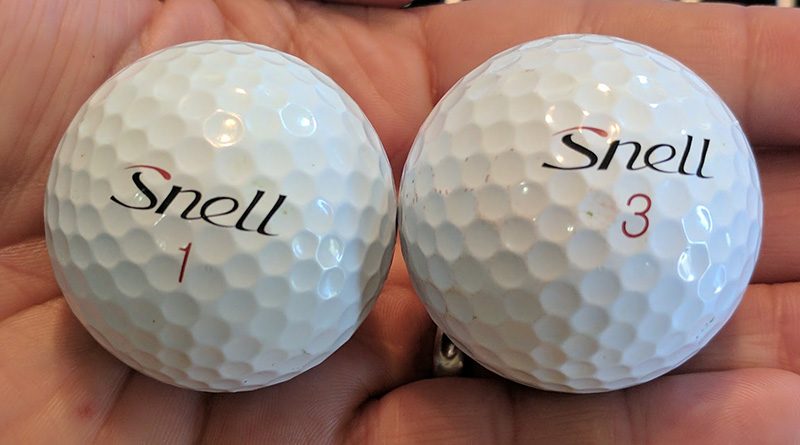
It’s a trick question. Both balls have been played over 36 holes.
Conclusion
At $31.99 via the Snell Golf website, these tour-level balls are roughly half the cost of some of the big name brand balls and offer comparable or even better performance. Call it a two-fer.
PuttOut Pressure Putt Trainer
Categories: Golf Accessories • Golf For Women • Golf Gear • Reviews
Tags: Golf Training Aid • Putting • PuttOut
Line and speed are the two crucial factors in making putts. It doesn’t matter what grip you have, what putter you use, or what your apparel scripting is. If you can’t get the putt rolling on the proper line and speed you’re destined to bad putting.
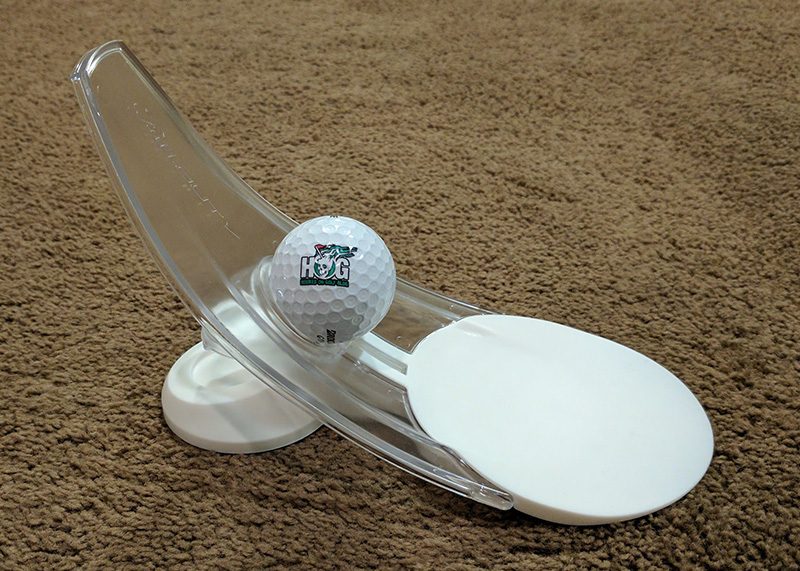
PuttOut Putting Trainer
The PuttOut “Pressure Putt Trainer” is designed to train the golfer get get the putt rolling on the correct line and speed. The unique curved design returns good putts the distance they would have traveled past the hole. The side contours reject offline putts and force the golfer to a bit of a “walk of shame” to get the balls, as those shots are not returned.
An interesting feature of the PuttOut is the little retractable “micro target.” In the photo above you can see the HOG golf ball is sitting in it. Putts on the exact line and speed will stop inside the target. Once the golfer gets used to strokes at such a tight precision and speed, putting into the much larger and easier to hit golf hole seems much easier. The micro target back plate is hinged so the golfer can flatten it out and turn the device into strictly a returning device.
The unit folds into a compact and easy to carry shape. The unit would fit easily in a golf bag or even luggage when traveling.
I keep mine in the hallway between the kitchen, my office, and the bathroom. It’s quite a trafficked spot. It’s fun to grab my putter and stroke a few to clear my my mind and improve my stroke, a few times per day.
Conclusion
If you need help with your line and speed and “pressure putting,” the $29 PuttOut could be a good option. Not sure the unit will help with non-pressure putting though. 😉
First Good Golf of 2017
Last week I played the first what I would call “good golf” of the season. I had a 9-hole net match against a 14 on Monday. I had to give the guy six pops a side. After making an incredible up and down for par on the 9th to win the hole the match was all square and went to extra holes. I had to shoot even par on the nine to end up square. Yeah, a 14 LOL.
On 10 I had to par to extend again as my opponent made bogey with a pop. Then on the par4- 11th I was in trouble. In long grass blocked by trees. I tried to punch out but the long grass grabbed the club and the ball, which went only about 20 feet. With my opponent on the green I was left with a 3rd shot from 115 out of deep grass. I put a perfect swing on it and knocked it to 15 inches. Saved par to extend again.
On the par-5 12th I knocked a 4-iron on the green for my 2nd shot and had an eagle putt to win. I had reached the previous two par-5’s in two as well. Never had three eagle putts in a row on three par-5’s. I was too aggressive though and ran the eagle by. Then missed the birdie for the win. I ended up having to make a 3-foot knee-knocker for par to extend. Nice 3-putt LOL.
Finally on the par-4 13th I finished off the match by chip-putting in a birdie from some long grass right of the green. To beat this “14” I had to shoot -1 for 13 holes. On to the 2nd round of net.
From the 3rd hole on I was battling a major blister on my left heel from walking in these new Ecco shoes. That made things more difficult and painful.
Then on Sunday I played in 102F temperatures with a buddy. Shot a 38 on the front and then on the back had 3-birdies and 3-bogeys to shoot even on that side. 74. Best round of the year by 3-shots.
Last week’s combined holes between the 13 for the match and 18 on Sunday, 41. Total in relation to par, +1.
Swing Thoughts
Whether I’m satisfied with my game isn’t necessarily related to numbers, it’s more related to the quality of shots and how I’m hitting it. But the numbers this past week did reflect the quality of play. This is the kind of golf that I can get satisfaction from, not hacking it around and shooting 84.
I also wonder if my recent better play is is partly due to resolution of some things in my personal life which were stressful? Or is it just that the game is coming around, or perhaps the gear change (below). Perhaps a combo of all of it.
Gear Change
Last week I used the combination of the Miura Small Blade irons and the Snell My Tour Ball. I’ve definitely lost distance off the tee with the Snell compared to a Bridgestone B330, but the rest of the game, irons and short game, seems to have benefitted quite a bit from the Snell ball.
Unfortunately I can’t play this week. Hope I can keep the momentum up with about a 10 day break.
First Look: Tourney Apparel Line
Categories: Golf Apparel • Golf Gear
Tags: Global Golf
I’ve just started my rigorous testing battery on a new golf apparel line exclusively available at Global Golf. The “Tourney” brand is licensed by Tharanco Lifestyles. Here are the items I’m trying out.
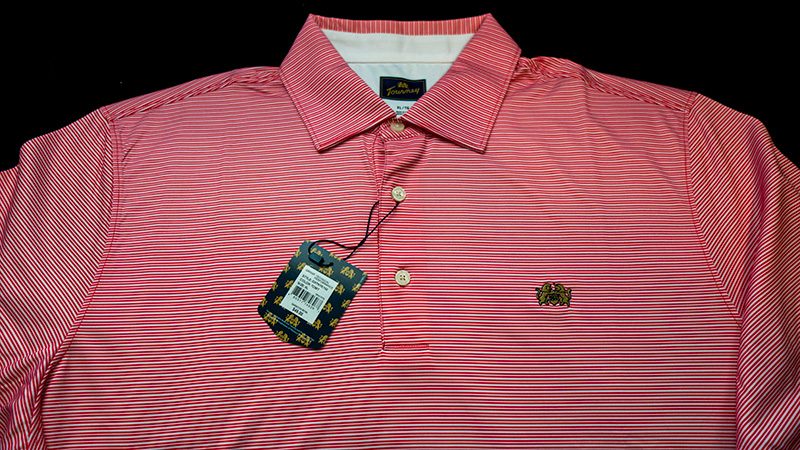
Polo
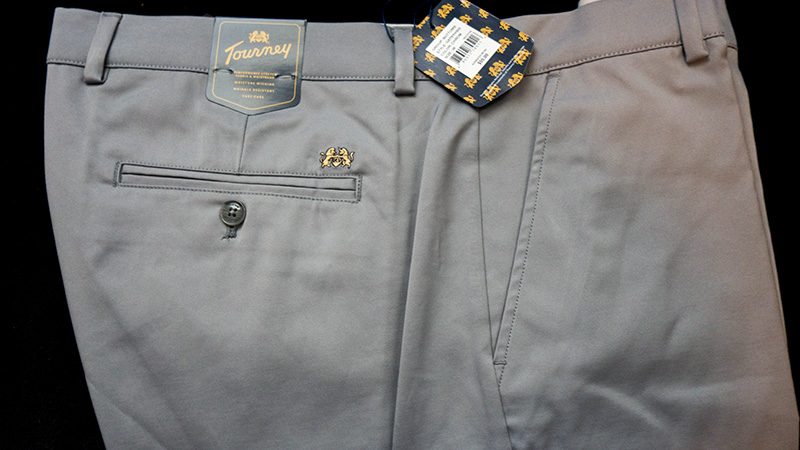
Tourney Redan Shorts
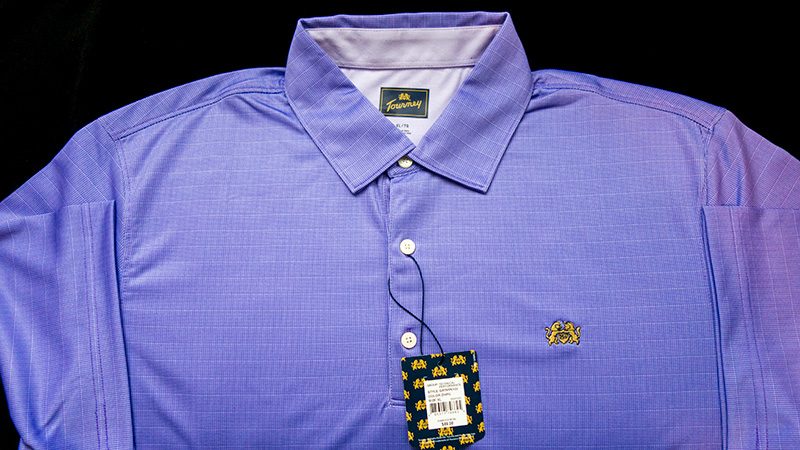
Polo
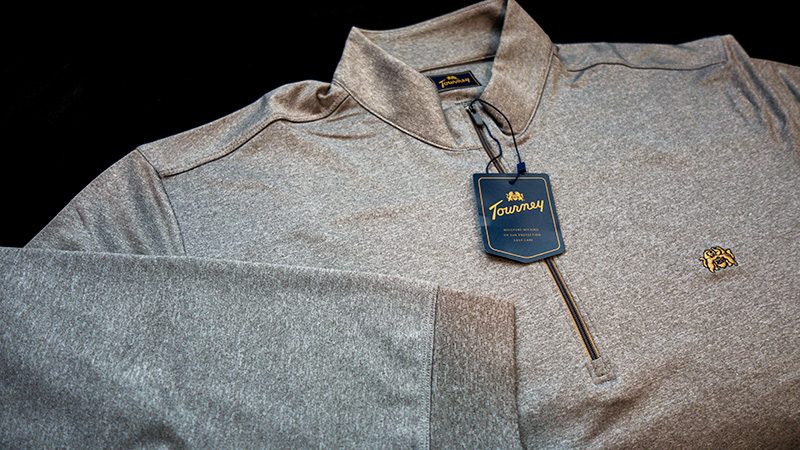
1/4 Zip Outerwear
I’ve worn all but the 1/4 zip outerwear so far. I won’t be wearing the 1/4 zip for a while since the temps are in the 105 range here right now!
This brand is solid so far and extremely affordable. I’m talking nice polos that cost as little as 1/3 and even 1/4 the cost of other brands.
Stay tuned for my full review soon.
« Previous 1 … 84 85 86 87 88 … 1,163 Next »

